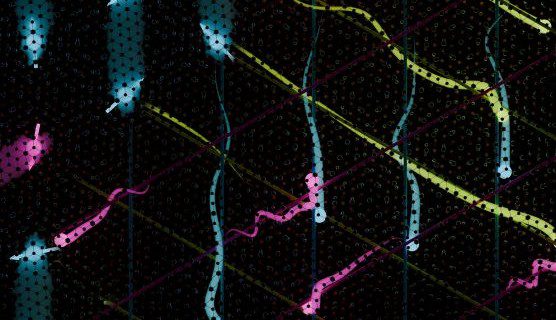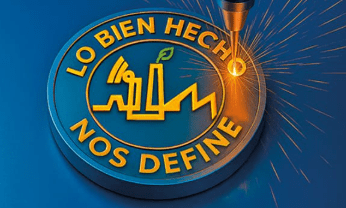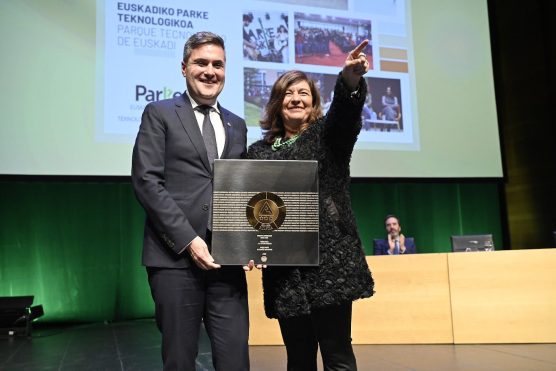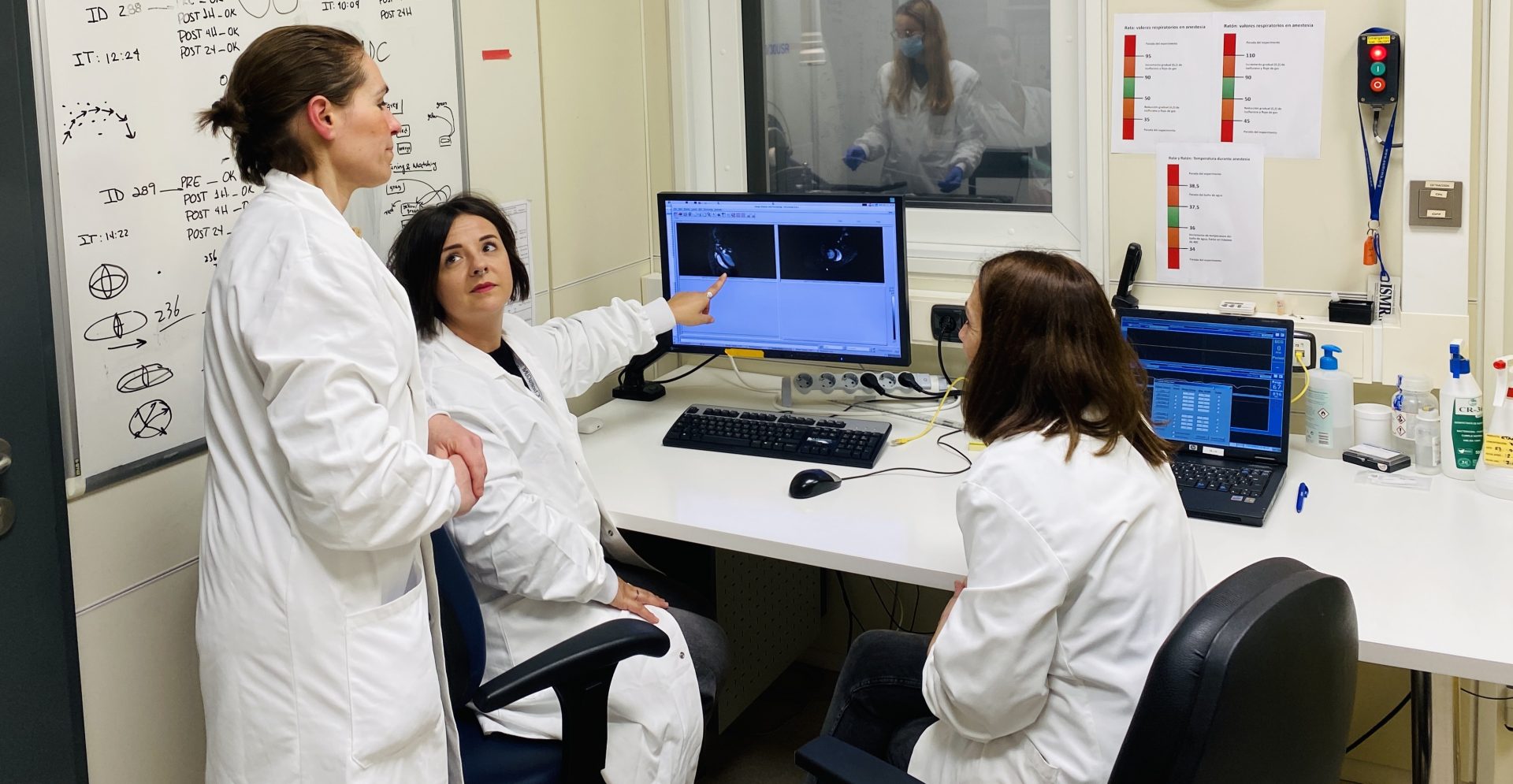Quantum breakthrough: layer rotation reveals new material properties

An international team, led by the Donostia International Physics Centre (DIPC), has discovered a new way to design novel quantum materials by stacking and rotating layers in a special way
The work published in Nature offers a new framework for the design and manufacture of next-generation quantum materials
A global group led in part by physicists from the Donostia International Physics Centre (DIPC) has presented a new framework for obtaining exotic quantum matter through stacking and twisting. Their findings, published in Nature, reveal a class of moiré materials that have not been investigated until now.
These optical interference patterns known as moiré—which sometimes appear when photographing closely spaced stripes—have an analogue at the atomic scale: when two crystal lattices are rotated, new electronic patterns emerge that radically transform the landscape of quantum properties. Mouare materials, created by slightly rotating two thin atomic layers on top of each other, have become the cornerstone of modern condensed matter physics. Simple geometric manipulation endows these rotated mouare systems with quantum properties that the original monolayers do not have.
In a crystalline material, the physical location of atoms in real space is described by their coordinates. Each crystal is also characterised, in momentum space, by a lattice called reciprocal space that describes the possible values of the momentum of the crystal particles. The key is that in the momentum space of a crystal there are special points, such as the K point and the M point, which show how electrons move and interact within materials. Each of these points has unique properties that can condition the electrical or optical behaviour of the material.
Until now, experimental studies have focused almost exclusively on the spin of hexagonal materials such as graphene and transition metal dichalcogenides around the K points of momentum space. But this method limits the quantum behaviours that can be explored. In contrast, the M point represents a completely different region of momentum space, with distinctive symmetry and electronic properties. Spin around the M point opens the door to completely new quantum phases that are inaccessible from the K point.
‘By turning our attention to M points, we greatly expand the catalogue of possible quantum phases,’ says Dumitru Călugăru, Leverhulme-Peierls Fellow at the University of Oxford and long-term visitor at the DIPC. ‘We have identified materials whose band minimum, i.e. lowest electronic energy level, lies at these M-points, offering a new frontier in the design of flat-band quantum systems.’ Such systems are studied for their potential in building exotic phases of matter, such as high-temperature superconductivity or spin liquid.
The research team, which spans fields such as theoretical and computational physics, chemistry and materials science, brings together various institutions from the United States, Spain, Germany, Canada and the United Kingdom. B. Andrei Bernevig, professor of physics at Princeton University and visiting Ikerbasque professor at the DIPC, is leading the effort.
The team began by systematically identifying single-layer materials in which the lowest electronic energy states are found at the M point. This led to the selection of two promising compounds, SnSe₂ and ZrS₂, and the use of computational simulations to theoretically ‘rotate’ these materials. What they found was surprising: the twist created exceptionally flat electronic bands, a crucial feature for strong electronic correlations and for discovering exotic quantum behaviours.
‘These M-point systems behave differently from K-point systems,’ says Haoyu Hu, a researcher at Princeton and former postdoctoral fellow at DIPC. ‘Although their electronic band structure appears simple, they exhibit a new type of symmetry that can lead to quasi-one-dimensionality, facilitating new forms of quantum phenomena.’
DIPC researchers Yi Jiang and Hanqi Pi have conducted large-scale simulations over several months and shown that a small twist—about three degrees—results in a flat band, greatly enhancing electronic interactions and fostering unconventional correlated states. ‘The twist can position electrons in both a hexagonal and a kagome-type lattice,’ says Jiang. Pi adds, ‘This positioning means that we can now experimentally obtain various quantum states that may include quantum spin liquids.’
Theoretical advances are already being accompanied by experimental improvements. Some of the predicted materials have been synthesised en masse and are now being exfoliated to obtain atomically thin sheets and realise the possibility of constructing M-twisted structures.
‘The experimental production of these materials is fundamental. Once twisted, closed and measured, these new quantum states can become tangible realities,’ says B. Andrei Bernevig. “Every new twist we make seems to bring new surprises. Basically, these materials offer a gateway to quantum states of matter that no one had imagined. And because they are highly controllable experimentally, the possibilities are truly limitless,” he emphasises.
This work lays the foundation for future experimental advances and marks a turning point in the way scientists design and explore next-generation quantum materials.




